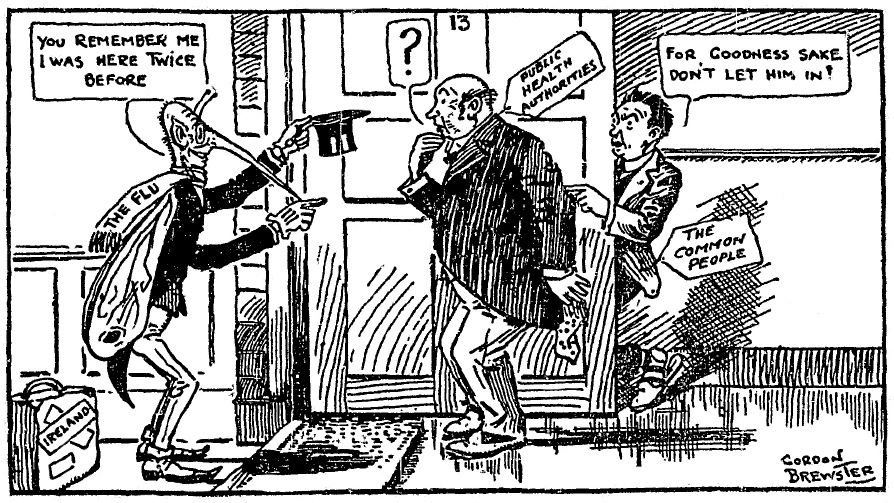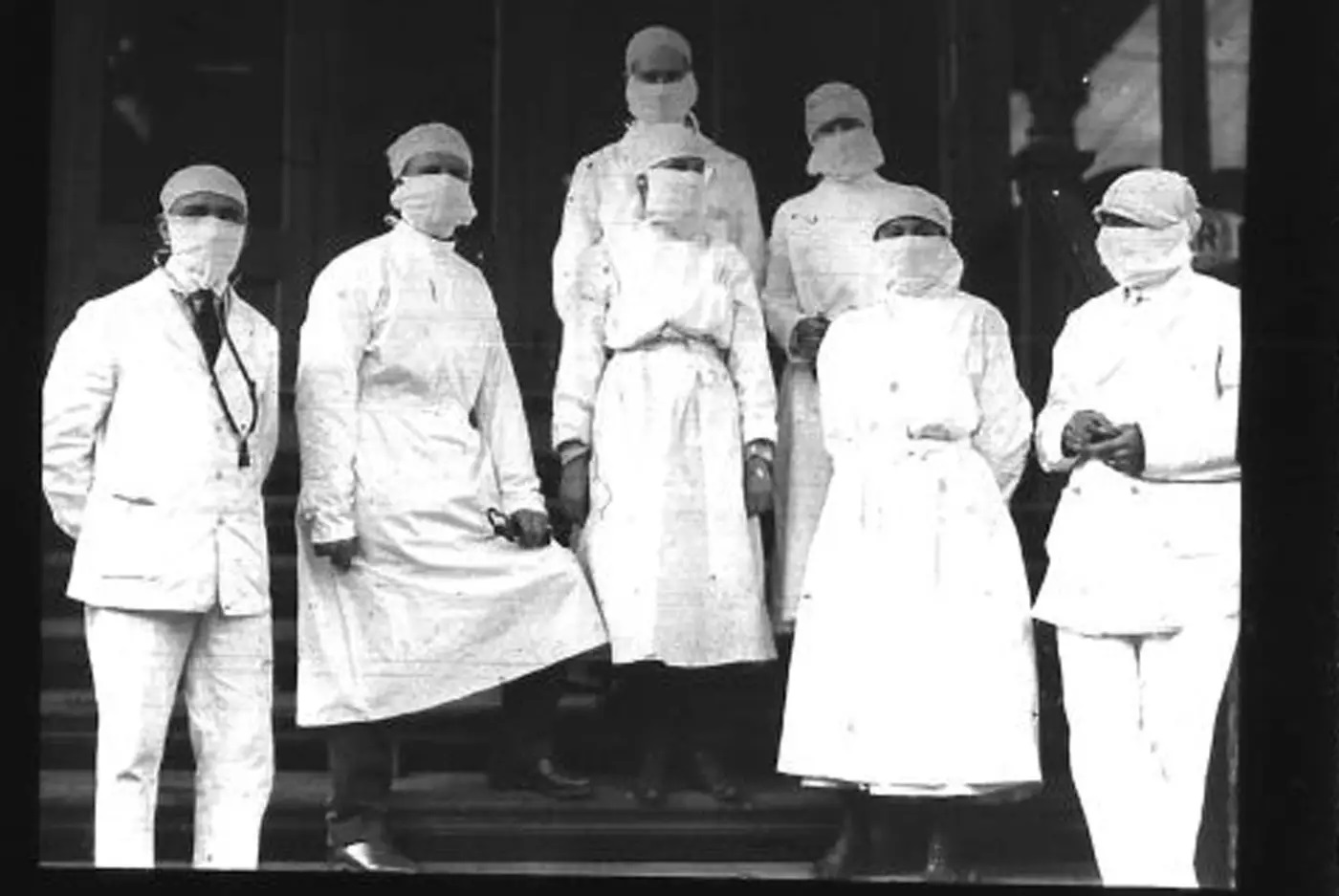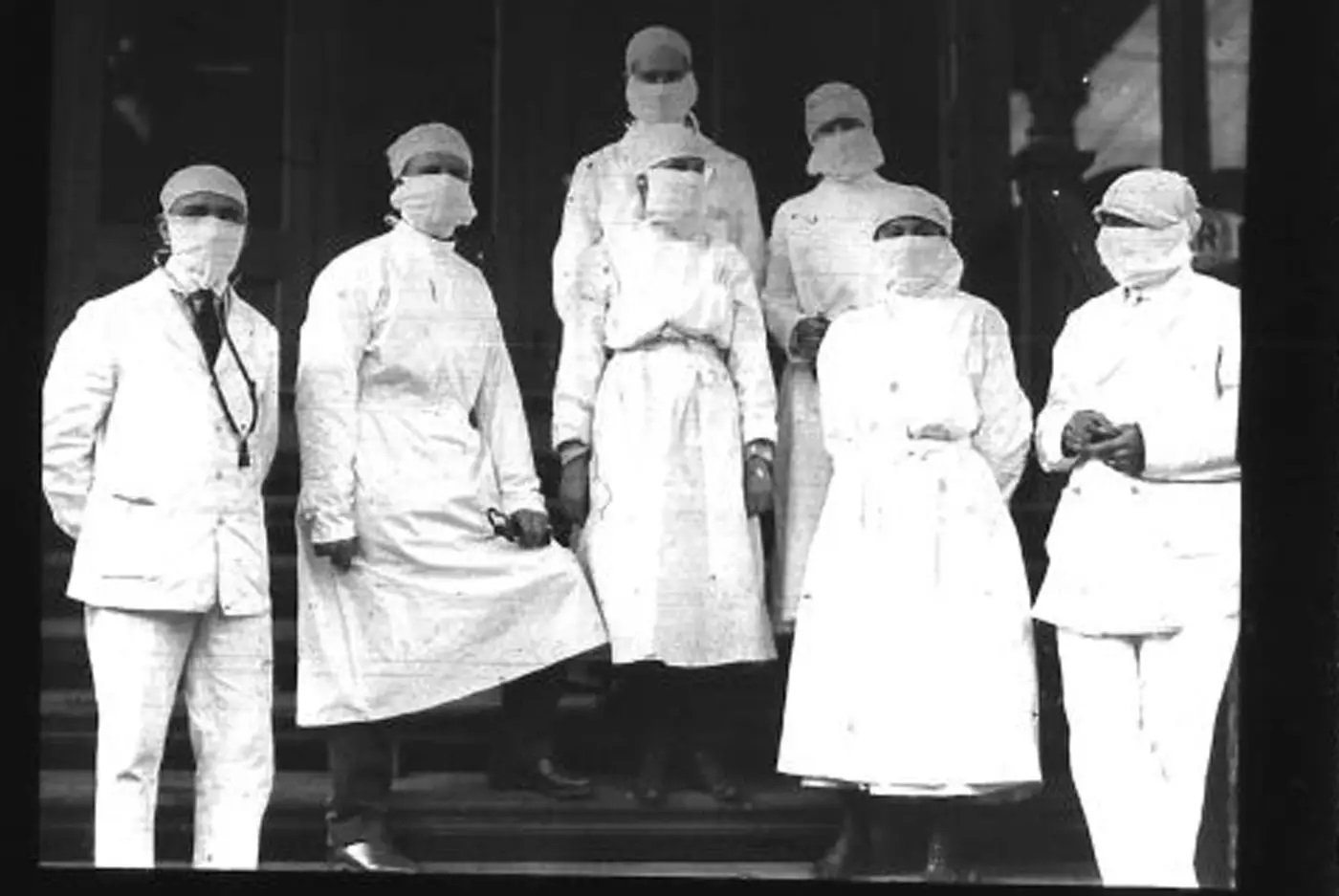Here we go again. Lockdown. And searching for positives in difficult times. Although the timeline for the development and roll-out of a vaccine for COVID-19 remains uncertain, we received a glimmer of hope over the past week or so with the news of potential vaccines on the horizon. This had me pondering what happened 100 years ago in the battle against the Spanish Flu.

There are certainly some strong similarities between the Spanish Flu and COVID-19: health care professionals, then and now, faced a virus they did not know much about; both viruses are strains of coronavirus and have similar symptoms; both presented as new, or novel, viruses meaning there were/are no vaccines or immunities. Eerily the timelines are very similar: most were not fearful at first, but the virus expanded exponentially, infecting hundreds, then thousands, then millions around the world. Closures and social isolations followed, and both in 1918 and in 2020, the pieces began to fall – bans of public gatherings, professional sports leagues closed down, as did non-essential businesses, schools, churches, theatres, clubs, parks and playgrounds. Hospital visiting hours were abolished and personal care homes were closed to all visitors. Quarantine wards were established in hospitals, and temporary hospitals were organized to meet the need.
There are some differences as well: closures in 1918 were not complete – and technology did not exist to support large segments of the population working from home or with online schooling, as we see today. There was no universal health care during the Spanish Flu pandemic.

Today, in the face of COVID-19, the provincial and federal governments are playing a much more active and vital role in directing and assisting Canadians than was the case 100 years ago. Much of the fight against the Spanish Flu was at the local level, led by the local Medical Officer of Health. The World Health Organization was formed in 1948, and as such there was nothing to advise governments, help them with their responses, or facilitate the sharing of vital information and resources. 100 years ago countries and communities were largely on their own to address the challenges. In Canada, the federal Department of Health (now Health Canada) was created in 1919 as a result of the Spanish Flu pandemic.
It is estimated that 1 in 6 Canadian contracted the Spanish Flu, and approximately 55,000 died between 1918 and 1920, making the loss of life in the pandemic on par with the losses in the First World War.
The Spanish Flu came in what has been described as waves, similar in some ways to what we see today with COVID-19. Although most analysis would suggest that the term “waves” is inaccurate – rather that the virus responded to human actions – restrictions and measures enacted in response to the pandemic reduced the impact, but with the relaxing of the restrictions, exposures and infections increased. Simple cause and effect.
Although its origins are uncertain, and information was often suppressed during the war, the pandemic likely came to Canada with returning soldiers. It was first noted in Canada in the Spring and Summer of 1918, but its deadliest form roared through with the so-called second wave in the Fall of 1918, followed by subsequent “waves” in Spring of 1919. Then, as sudden as it arrived, it faded. Locally there were still sporadic cases into 1920, but the virus generally dissipated on its own terms, without a vaccine, leaving death, social upheaval, and economic disruptions in its wake. To say the least, it was a long, hard 2 ½ years, and even then the virus remained. And it has never left us. Traces of the same virus have been found in other flu viruses. The Spanish flu virus continues to appear, mutating and acquiring genetic material from other viruses. But vaccines were developed in the 1940s and 1950s to combat it. An annual “flu shot” has become part of a regular health routine for millions of people.

The recent news of potential vaccines for COVID-19 highlights another striking difference between yesteryear and today. From “A History of Vaccines”:
“A few vaccines to prevent other diseases were available at the time — smallpox vaccine had, of course, been used for more than 100 years; Louis Pasteur had developed rabies vaccine for post-exposure prophylaxis after an encounter with a rabid animal; typhoid fever vaccines had been developed. Diphtheria antitoxin — a medication made from the blood of previously infected animals — had been used for treatment since the late 1800s; an early form of a diphtheria vaccine had been used; and experimental cholera vaccines had been developed. Manufacturers had developed and sold various mixed heat-killed bacterial stock vaccines of dubious usefulness. In terms of knowledge of influenza as an infectious disease, not a great deal was understood at the time. Many medical professionals thought that influenza was a specific communicable disease that presented seasonally, usually in the winter. Even so, without specific diagnostic tools, mild cases of influenza were difficult to distinguish from other acute respiratory illnesses. The tools of the time were only able to detect bacteria, not smaller pathogens … Certainly none of the vaccines prevented viral influenza infection – we know now that influenza is caused by a virus, and none of the vaccines protected against it … It was not until the 1930s that researchers established that influenza was in fact caused by a virus, not a bacterium …”
In short, our medical experts known more today about combatting viruses than they did a hundred years ago. They can learn from the Spanish Flu, as they race to find a vaccine. We can learn as well, by following the advice of health professionals. It was hard then, just as it is hard now, and we all long for a return to “normal”. One day, a “COVID-shot” vaccine will also, we can all hope, become part of our new normal.
Speaking only for myself, the news of vaccine development has provided a glimmer of hope, of a light at the end of the tunnel. The “end” of COVID-19 may still be a long way off, but if the Spanish Flu can provide a map, it shows us the need to collectively remain vigilant and aware that this road has many ups and downs, and we are only part of the way into this journey. But we will get there, together. We will emerge, in time. This too shall pass.



Comments are closed.